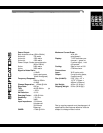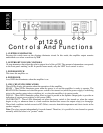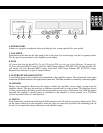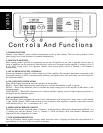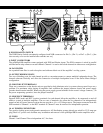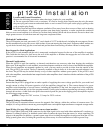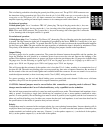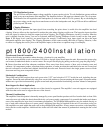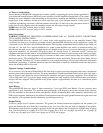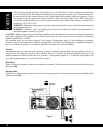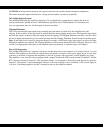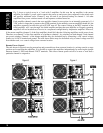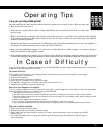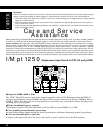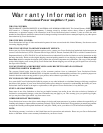
CAUTION: In bridged mono operation, the output connections are actually a balanced output configuration.
This means that both output terminals have voltage present (neither one may be grounded).
70 Volt Distribution Systems
The pt2400/pt1800 have the capability of driving a 70 volt distribution system directly without the need for
step up transformers. pt2400 in stereo 1200W/channel. pt1800 in stereo 700W/Channel. For minimum wire
loss, use appropriate wire size for the length of distance travelled.
Clipping Eliminator
This circuit prevents the input signal from exceeding the point where it would drive the amplifier into hard
clipping. It has no effect on the signal until it reaches the point where clipping would occur. The larger the input signal
the more the signal is reduced to keep the output just below clipping. The Clipping Eliminator circuitry is inactive when
the unit is shipped from the factory, but can be activated with the Clipping Eliminator Switch located on the back panel.
N o t e : If the Input Level control(s) are turned down far enough, a sufficiently large input signal can drive the input
d i fferential amplifier into clipping. The Clipping Eliminator circuit cannot remedy this kind of clipping. Likewise, it has
no effect on clipping that occurs prior to the amplifier inputs (at the mixer or equalizer stage, for example).
Power ON Sequencing
The pt2400/pt1800 have one sequence switch per channel that allows each channel to be powered up in 3 second
intervals. The amplifiers power down at a much slower rate which is a function of the power supply decay. In very larg e
systems it is advisable to sequence the amplifiers on and off in groups, with one master control amplifier per group.
The amplifiers come from the factory equipped with a jumper between the SND (send) terminal of channel 1 and the
RCV (receive) terminal of channel 2. This programs channel 1 to be turned on first and provide the turn on signal for
channel 2. The channel 2 send terminal then connects to the next amplifier’s receive terminal. A DC control signal of
+10 volts, 5 milliamps applied to the RCV terminal powers up the amplifier channel.



